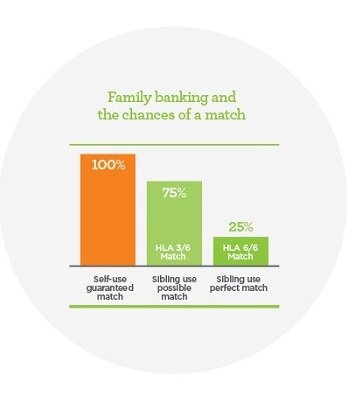 Family Cord Banking
Family Cord BankingFamily cord blood banking means your child’s cord blood stem cells may also be used to treat compatible family members.
Not only do siblings have a much higher probability of a cord blood match than an unrelated donor, the medical outcomes are superior when related (sibling) cord blood is used in transplants45.
When you store with Cell Care the ownership of the cord blood remains with you and your child, and is retained exclusively for your family’s use which has the following benefits:

The chance of an exact cord blood match from a sibling is 25%, and there is an additional 50% chance of a half match. Importantly as cord blood is less immunogenic (seen as foreign by the body), a perfect match may not be required. So by storing cord blood for each child, parents can increase the chance of finding the best source for a match should it ever be required.
Stem cell matching is based on human leukocyte antigen (HLA) markers. Passed down from parents to their children, these markers act like cell fingerprints, letting the immune system know which cells may belong in the body and which cells are foreign to it. If a patient’s HLA markers exactly match those of the new stem cells being introduced, the patient’s body will readily accept the cells. If the cord blood HLA match is close but not perfect, chances are still favourable that the patient’s body will accept the cells – leading to fewer transfusion complications.